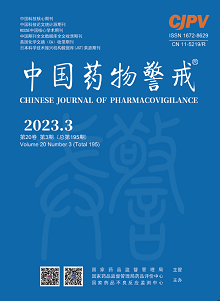|
|
Effect of Jinzhen oral liquid on the model of human coronavirus pneumonia and fever epidemic immature adult mice
ZHAO Ronghua, SUN Jing, BAO Lei, GENG Zihan, Li Guiping, WANG Daohan, LI Shuran, ZHANG Jingsheng, PANG Bo, XU Yingli, ZHOU Lirun, BAO Yanyan, CHEN Mengping, GUO Shanshan, CUI Xiaolan
2023, 20(3):
248-252.
DOI: 10.19803/j.1672-8629.20220371
Objective To study the therapeutic effect of Jinzhen oral liquid against a human coronavirus pneumonia and fever epidemic immature adult mouse model. Methods ICR mice were divided into the blank group, HCoV-229E infection group, TCM heat syndrome group, human coronavirus pneumonia and fever epidemic mouse model group, chloroquine phosphate group, Lianhua Qingwen group and Jinzhen oral liquid high-dose, medium-dose and low-dose groups (30 mL·kg-1·d-1, 15 mL·kg-1·d-1, 7.5 mL·kg-1·d-1), with 10 mice in each. HCoV-229E infection was used for modeling and administration. Lung indexes and inhibition rates of mice were observed. The nucleic acid of lungs was detected by ELISA. IL-1β, while MDA and hypothalamus factors PGE2 and CAMP by flow cytometry. Results The lung index of model mice in the Jinzhen oral liquid medium dose group was significantly reduced (P<0.01), and the inhibition rate of the lung index was 43.93%. The viral load and IL-1β in lung tissues of model mice were significantly reduced in the Jinzhen oral liquid high-dose and medium-dose groups (P<0.05, P<0.01). MDA in lung tissues of model mice was significantly reduced in the medium-dose group (P<0.01). The production of PGE2 and CAMP in the hypothalamus of model mice was significantly inhibited in the Jinzhen oral liquid group (P<0.05, P<0.01). The percentage of peripheral blood immune cells was not significantly affected. Conclusion Jinzhen oral liquid can significantly improve the immunity of the coronavirus pneumonia and fever epidemic mouse model by inhibiting the inflammatory cytokine expression in lung tissues, mitigating lung inflammatory injury, reducing significantly the lung index and viral load, and lowering the expression of temperature-regulating central factors.
References |
Related Articles |
Metrics
|

